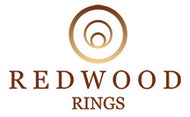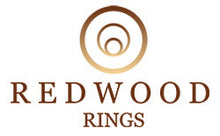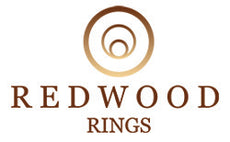What is the Average Ring Size for a Woman?

Table of content
The Average Ring Size for Women
What is the average ring size for a woman? Typically falls between sizes 5 and 7, with size 6 being the most commonly purchased size. However, this range is a generalization, and individual ring sizes can vary significantly based on several factors.
It's crucial to remember that the concept of an 'average' ring size is a starting point rather than a one-size-fits-all solution. Factors such as genetics, height, body size, and even the climate can influence finger size. For instance, taller or larger-boned women might find themselves needing a larger ring size, while more petite women often wear smaller sizes. Moreover, geographical differences can also play a role; the average ring size in one country may differ from that in another due to genetic and lifestyle variations.
Another important consideration is that a woman's ring size can change over time. Age, health changes, and even the time of day can affect finger size. For example, fingers tend to swell in warmer weather or during certain times of the month and can shrink in cold temperatures.
Given these variables, it's always recommended to get professional ring sizing from a jeweller, especially when purchasing a ring for a special occasion. A jeweller can provide the most accurate measurement and consider factors like the width of the band, which can impact how a ring fits.

Factors Influencing Ring Size
Genetic and Physical Factors
A significant determinant of ring size is genetic and physical makeup. Just as height and body proportions vary widely among individuals, so do finger sizes. Genetics plays a crucial role in determining bone structure, including the size and length of fingers. In addition to genetic predispositions, overall body size and muscle mass can also influence finger size. For example, someone with a larger frame might naturally have thicker fingers, thereby requiring a larger ring size.
Did you know ?
That pregnancy can impact ring size due to factors like fluid retention, causing changes during this period?
Geographical Variations
Ring sizes can also vary by region due to genetic and environmental differences. For instance, average ring sizes in North America might differ from those in Asia or Europe. These variations can be attributed to distinct genetic backgrounds and physical characteristics prevalent in different populations. When considering ring sizes, it's important to take into account these geographical variations, especially for international transactions or for people with diverse ethnic backgrounds.
Age and Health
Age and health are other critical factors that can affect ring size. Over time, a person's ring size might change due to natural changes in the body. Conditions such as arthritis or osteoporosis can cause changes in the joints of the fingers , leading to a need for different ring sizes. Similarly, changes in health, including weight gain or loss, can significantly impact the size of the fingers. It's not uncommon for someone to require a different ring size later in life compared to what they wore in their younger years.
Did you know ?
That the dominant hand usually has a slightly larger ring finger? Sizes can differ between the left and right hand.
Importance of Accurate Sizing
Accurate sizing of a ring is essential, not just for comfort but for overall wearability and longevity of the ring. A correctly sized ring ensures a comfortable fit, avoiding problems like restricted blood flow or the risk of losing the ring if it's too loose. Furthermore, it's vital for the long-term health of your finger, preventing circulation issues or skin irritation.
Beyond the physical aspects, a well-fitting ring holds emotional and symbolic significance, especially in the case of engagement or wedding rings. It symbolizes a commitment that is worn daily, and its proper fit enhances this sentiment. Therefore, investing time in getting professionally sized is more than a formality; it's a crucial step in ring selection that affects its wear, integrity, and the connection it symbolizes.
Sizing Tips and Recommendations
Professional Sizing
The most reliable way to determine your ring size is by visiting a professional jeweller. Jewellers use specialized tools and techniques to measure your finger size accurately. This service ensures precision and takes into account factors like the ring's design and how it will sit on your finger. Additionally, jewellers can provide valuable advice on how different styles and materials may affect the sizing.
Consider Width
The width of a ring can significantly impact how it fits. Wider bands tend to fit more snugly than thinner ones, as they cover more surface area on the finger. When trying on rings, consider the width of the band and how it affects your size. You might need a slightly larger size for a wider band to ensure it fits comfortably.
Mind the Knuckle
For many people, the knuckle is the widest part of the finger and can complicate sizing. If your knuckle is significantly larger than the base of your finger, you'll need a size that balances being snug enough not to spin or slide off while still being able to slide over the knuckle. Some opt for rings with special features like sizing beads or adjustable bands to accommodate this.
Check at Different Times
Finger size can fluctuate throughout the day due to temperature, humidity, and physical activity. To get a more accurate measurement, try sizing at different times, preferably when your body is at a normal temperature and not swollen from heat or exercise. This approach helps in choosing a size that will be comfortable under most conditions.
Size Up for Stackable Rings
If you're planning to wear multiple rings on the same finger, like stackable rings, consider going up a size. Stacking rings can make the fit feel tighter than wearing a single ring. Sizing up ensures that the stacked rings sit comfortably on your finger without restricting circulation.

Resizing and Adjustments
Resizing and adjusting a ring is an essential aspect of jewelry ownership, catering to changes in finger size or initial sizing errors. However, it's important to note that not all rings are resizable , with factors like material hardness and design complexity playing crucial roles. Methods of resizing vary, ranging from simple cutting and soldering for softer metals to more intricate processes for rings with gemstones or made of harder metals like platinum.
When purchasing a ring, especially for long-term wear such as wedding or engagement rings, consider the potential for future resizing, keeping in mind that rings can typically be adjusted only a few sizes up or down without compromising their integrity. Professional consultation is vital, as jewellers can provide expert advice and skillful resizing. For rings that cannot be resized, alternatives like ring guards or sizing beads offer temporary solutions for fit adjustment. Overall, understanding the possibilities and limitations of resizing can help maintain the longevity and appearance of your cherished rings.
What is the Average Ring Size for a Woman?
Individual factors like genetics, geography, age, and health significantly determine the perfect ring size. This underscores the importance of accurate sizing for comfort, health, and the ring's longevity. Professional sizing is key, considering aspects such as bandwidth, finger shape, and daily fluctuations in finger size. Additionally, the potential need for future resizing should be factored in when choosing a ring, especially those with complex designs or made of harder metals.
Whether for a special occasion or everyday wear, the perfect ring size ensures both physical comfort and the emotional joy of wearing a piece that truly feels like it's meant just for you.






